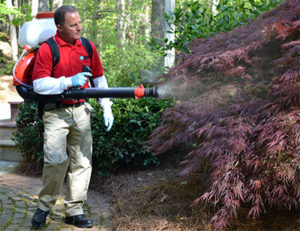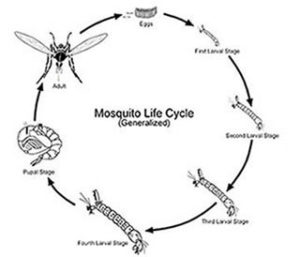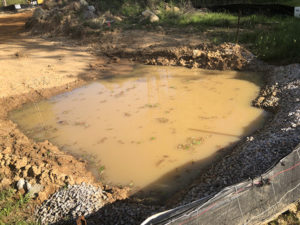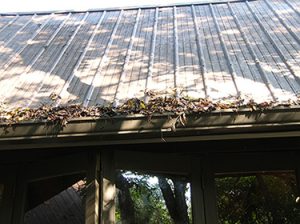Mosquito Control Around Homes and in Communities
go.ncsu.edu/readext?469474
en Español / em Português
El inglés es el idioma de control de esta página. En la medida en que haya algún conflicto entre la traducción al inglés y la traducción, el inglés prevalece.
Al hacer clic en el enlace de traducción se activa un servicio de traducción gratuito para convertir la página al español. Al igual que con cualquier traducción por Internet, la conversión no es sensible al contexto y puede que no traduzca el texto en su significado original. NC State Extension no garantiza la exactitud del texto traducido. Por favor, tenga en cuenta que algunas aplicaciones y/o servicios pueden no funcionar como se espera cuando se traducen.
Português
Inglês é o idioma de controle desta página. Na medida que haja algum conflito entre o texto original em Inglês e a tradução, o Inglês prevalece.
Ao clicar no link de tradução, um serviço gratuito de tradução será ativado para converter a página para o Português. Como em qualquer tradução pela internet, a conversão não é sensivel ao contexto e pode não ocorrer a tradução para o significado orginal. O serviço de Extensão da Carolina do Norte (NC State Extension) não garante a exatidão do texto traduzido. Por favor, observe que algumas funções ou serviços podem não funcionar como esperado após a tradução.
English
English is the controlling language of this page. To the extent there is any conflict between the English text and the translation, English controls.
Clicking on the translation link activates a free translation service to convert the page to Spanish. As with any Internet translation, the conversion is not context-sensitive and may not translate the text to its original meaning. NC State Extension does not guarantee the accuracy of the translated text. Please note that some applications and/or services may not function as expected when translated.
Collapse ▲Mosquitoes are important pests because their biting activity interferes with outdoor activities and they can transmit disease organisms to people, pets and domestic animals and wildlife. Most mosquitoes are active during twilight hours and at night. However, around our homes and workplaces, the mosquitoes that breed in rain-filled objects, ditches, and tree holes are often active during the day. Pesticide applications are only a short-term solution to long-term nuisance mosquito problems. It takes a greater effort on our part to prevent or at least reduce these problems.
All mosquitoes need water to complete their life cycle (see diagram) and the amount of water . Some lay their eggs either individually or in “rafts” on the surface of water in swamps and floodwater areas. These eggs usually hatch within 24-48 hours depending on water temperature. Other mosquitoes (including the Asian tiger mosquito) deposit eggs on the sides of tree holes or discarded containers, or in depressions in the ground that will fill with water. These eggs survive over the winter and possibly more than a year. Some eggs will hatch when they are flooded by rainfall, but other eggs in the same batch may not hatch until after several flooding and drying cycles.
The mosquito larvae that hatch from these eggs are commonly called “wrigglers” because you can often see the larvae wriggling up and down from the surface of the water. Most mosquito larvae feed on organic material as well as bacteria, algae and other microorganisms in the water. Some mosquito species are actually beneficial because their larvae prey on other aquatic insects including the larvae of other mosquitoes. About 7-10 days after the eggs hatch, larvae mature transform into pupae or “tumblers” in preparation for adult life. Adult mosquitoes emerge about 3-4 days later and first feed on plant nectar. Male mosquitoes mate with females one to two days after the females emerge. After mating, female mosquitoes then begin searching for an animal on which it takes a blood meal. Male mosquitoes do not bite; they feed strictly on plant nectar.
Mosquito Breeding Sites

Holes created when tree limbs break off and fill with rain water may become breeding sites for mosquitoes. (M. Waldvogel, NC State)
Tree holes (as seen here) can fill with rain water and become mosquito breeding grounds. Since mosquitoes need water to complete their life cycle, the source of a mosquito problem can be just about anywhere that water might collect. Farm ponds and lakes are typically not major breeding areas for the mosquitoes that most concern us. Fish and predatory insects (such as dragonflies) in the water often keep these mosquito populations in check. Plus, birds, bats, and some terrestrial We can improve this natural control by keeping the ponds free of weeds, algae and floating debris which provide hiding places for mosquito larvae.
Hurricanes, tornadoes, and other severe storms contribute to problems as well. For example, tree limbs that break off can create holes in the tree trunks where water collects and allow mosquitoes to breed (image at right). In residential areas, human activity often creates mosquito breeding sites or promote increased mosquito activity around natural bodies of water. Clogged drainage ditches along roads can become productive mosquito breeding sites. Logging and construction activities (including roadwork) can leave deep tire ruts and holes in the soil or may have silt and stormwater run-off control areas that trap water and can become breeding sites for “floodwater” mosquito species.
Some mosquito species (such as saltmarsh mosquitoes) can fly several miles from their breeding site in search of blood meals. The more common Asian tiger mosquito tends to fly shorter distances (100 – 300 yards) which still allows it to invade your property from surrounding areas in your neighborhood. The mosquito’s mobility makes control on individual properties difficult. A wide-area approach that uses both chemical and non-chemical tactics is needed.
Source reduction
A community-wide effort is needed to “clean up” and (preferably) eliminate mosquito breeding sites. Around your home and neighborhood, natural tree holes (seen at right) and man-made objects such as bird baths, boats, canoes, discarded tires, and plant pots collect rainwater and allow mosquitoes to breed literally right in our own backyard. Stagnant water in abandoned or poorly-maintained swimming pools becomes an ideal breeding site. This can be a particular problem on homes that are vacant (e.g., foreclosures). You can help reduce mosquito populations by eliminating or properly maintaining these problem spots:
- “Tip and Toss” – empty or (preferably) get rid of containers, old tires, etc. that can hold stagnating water.
- If you use barrels/containers to collect rainwater for watering gardens, cover them with screening to keep out debris and mosquitoes. Keep the screens clear of debris as well.
- Dump excess water from dishes under outdoor flower pots.
- Flush the water out of bird baths at least twice weekly (the birds will appreciate the fresh water)..
- Store boats, canoes and other objects so that they do not collect rainwater. Remove water that collects in depressions in tarpaulins covering boats and other equipment or objects.
- Cover or drain unused swimming pools. If you cover them with a tarp, make sure you remove leaves and other debris that collect on the surface.
-
Keep your roof gutters free of leaves and other debris that prevent water from draining and will attract mosquitoes.
- Correct drainage problems in your yard that allow rainwater to pool in low-lying areas.
- Fill tree holes with expanding foam (not cement) to keep them from being used as breeding sites by mosquitoes.
- Remove debris (or report drainage problems) in drainage ditches and culverts along private or public roadways.
Personal Protection – Repellents
Wearing long-sleeved shirts and long pants outdoors help to reduce mosquito bites but can be uncomfortable during hot summer months. Insect repellents can provide personal protection from mosquitoes. Many of these products contain DEET (N,N-diethyl-m-toluamide), but the USEPA has updated its information on selecting repellent products. Select the desired formulation (e.g., lotion, aerosol spray or cream) containing the highest percent of active ingredient, as stated on the product label, and apply it to exposed skin. Repeated use of repellents over a short period of time is not recommended, especially for children and pregnant women. We also have additional information about repellents.
Candles containing oil of citronella are often used outdoors to repel mosquitoes from around decks and picnic tables. These products work best when there is relatively little air movement that might disperse the chemical too quickly.
Chemical Control
Chemical control of mosquitoes primarily targets the adult. Some counties and municipalities may have mosquito control programs. Such wide area spraying should be based on surveying areas (rather than simply responding to complaints)
Outdoor backpack or hand-held foggers will kill mosquitoes in the general area and keep other mosquitoes away for several hours, but once the chemical dissipates, mosquitoes may move in from surrounding untreated sources.

Treating shrubs that are resting sites for mosquitoes. (Photo courtesy of Pest Management Systems, Greensboro, NC)
Spraying thickets, shrubs and trees along the perimeter of your yard helps reduce the population of mosquitoes that rest in these areas, but some mosquitoes may move readily back into these areas from surrounding untreated places. Consult the NC Agricultural Chemicals Manual or your county Cooperative Extension Center for more information on selecting appropriate pesticides for use against mosquitoes.
Think about Pesticide Safety
Whether applying pesticides yourself or hiring a professional service, please remember that insecticide can drift, i.e., can be carried by wind onto someone else’s property. Regardless of the amount of chemical involved, “drift” is actually illegal no matter how small of the quantity travels goes off-site. Before using chemicals on your property, you should take these precautions:
- If you hire a professional applicator, ask for a copy of the product label for the pesticide(s) that they will use. Some products advertised as “natural” or “the ingredient found in chrysanthemum flowers” are actually synthetic pesticides (called “pyrethroids”) which are toxic to many other insects including beneficial ones (such as ground beetles, lady beetles, lacewings, and honey bees). These products are also highly toxic to fish. Be careful when treating near decorative fish ponds.
- Talk to your neighbors about when and where you plan to treat your yard.
-
Many product labels have restrictions on spraying (or allowing drift onto) flowering plants when bees are actively visiting those areas. Read the labels carefully before using the product. Avoid spraying when bees and other pollinators are actively foraging (visiting flowers). Whenever possible, spray early in the morning or later in the evening.
- Before applying any pesticides in your yard (or having them applied for you) be sure that you look at what is on the other side of your fence, property line, or wherever you are spraying. Are there children and/or pets (and their water/food bowls) in the yard? Does your neighbor have any bee hives, a fish pond, or a vegetable garden? Many of the pesticides used to treat yards are not intended to be sprayed on edible plants.
You can also treat mosquito larvae; however, treating large bodies of water or numerous small artificial breeding sites can be difficult and expensive, particularly for an individual property owner. Large-scale control programs targeting mosquito larvae are best left to trained individuals in county or local government agencies. Most of these chemicals are not selective and some may even harm beneficial insects and other non-target organisms. Furthermore, use of these chemicals will provide only temporary reduction in mosquito populations. Modifying or eliminating breeding sites is the long-term solution to severe mosquito problems.
For small areas on your property, such as garden pools, or water troughs for horses, you might want to try a microbial insecticides that are available at many retail stores, garden centers, and on-line garden suppliers. There are several products formulated as “dunks” or as granules that contain the bacterium Bacillus thuringiensis israelensis or “Bti”. The bacteria kill mosquitoes, but does not harm fish, birds or other wildlife. The “dunk” versions are well-suited for small breeding sites (100 sq. ft. or less) and will control mosquito larvae for about 30 days. Before using Bti products, you need information on the life cycle and habitat requirements of mosquitoes in your area. Simply treating all areas of standing water without knowing if they are actually sources of the problem is a waste of time and money.
Other Biological and Non-chemical Control Measures
- Install tight-fitting screens on doors and windows to help keep mosquitoes out of your home.
- Although bats and birds, such as Purple Martins, consume mosquitoes as part of their diet, but they do not have a significant impact on mosquito populations. You can install nesting boxes around your property to attract these natural predators to the area. However, keep in mind that their feeding activity is not likely to be sufficiently selective to cause noticeable reductions in mosquito populations.
What Doesn’t Work
Electrocutor traps (“bug zappers”) placed outdoors are not effective in reducing or eliminating mosquito populations. Studies have shown that less than ¼ of 1% of the insects “zapped” in such devices were actually biting insects. The majority of the insects killed in electrocutor traps are actually beneficial in some form. Electronic mosquito repellers that emit high frequency sound to “repel” mosquitoes have not been shown to be effective either.
Claims that certain plants placed around a porch or deck will keep mosquitoes away are not supported by any scientifically-based test results. Plants or devices that emit repellent chemicals will not be effective under conditions such as high winds.
Several types mosquito traps that use radiant heat and/or chemicals such as carbon dioxide or octenol to attract mosquitoes are available. Keep in mind that these traps have certain effective distance in which they attract mosquitoes and so a single trap may attract mosquitoes but not provide “control”. As with repellent plants, windy days/nights may push the chemical in directions that may reduce their ability to provide reasonable coverage.







